Many thanks to iFi for the tour program, to let us have some experience with the new iFi micro iDSD Black-Label!

iFi micro iDSD Black-Label product web page:
http://ifi-audio.com/portfolio-view/micro-idsd-bl/
Manual:
http://ifi-audio.com/wp-content/uploads/data/manual/miDSDBL_manual.pdf
Due to the limitation of max 100000 characters in this review section, I couldn't post here the features and measurement part of this review. Please check the features and measurement part here:
iFi micro iDSD Black-Label - In-Depth Review
The iFi micro iDSD Black-Label is the improved version of the previous iFi micro iDSD. iFi has shared to us in detail, many of their design considerations during the development of the micro iDSD. Lot’s to learn from the post, therefore I think it is worth to post the link to the early discussion here:
http://www.head-fi.org/t/711217/idsd-micro-black-label-tour-details-page-147-release-info-page-153
I bought the iFi micro iDSD pre-ordered from Stereo Singapore in September 2014. Since then it has been one of my favorite portable DAC. I like the line output sound quality especially when paired with iFi micro iCan, but the headphone output of iFi micro iDSD requires some matching to sound best. My biggest complaint so far from the iFi micro iDSD is the quality of the iEMatch switch that often glitchy and causes loss of the right channel or severe channel imbalance. The volume pot of my iFi micro iDSD also has audible channel imbalance below 9:30’ position. Together with the glitchy iEMatch switch, it makes me difficult to use it for sensitive IEMs. I’m glad to say that I found the channel imbalance of the review unit of the iFi micro iDSD Black-Label has been greatly reduced, and practically I didn’t have any channel imbalance issue even at low volume setting. I hope this will be the case for all iFi micro iDSD Black-Label units. I also hope that the iEMatch switch durability has been improved on the Black-Label version.


Some of the improvements in the Black-Label version are some of the electronic components, power sections, clock system, and some other improvement on both digital and analog circuit sections, including the implementation of custom Op-Amp. There is no changes in the technical specifications and features from the previous iFi micro iDSD, so feature wise both the iFi micro iDSD and the Black-Label version are similar. The improvement is more on the sound quality. One might ask when there is an improvement in the sound quality, why it is not shown in the specification? The simple answer is, the measured specifications don't cover all aspects of the sound quality. Basic specifications such as FR, THD, and SNR are only a few aspects of the audio quality and quite often are not advertised in detail. THD for example, usually only advertised as average THD, but manufacturer usually doesn't give further detail like what is the distortion profile across the audio band, which type of distortion that is more dominant, etc. Therefore, usually, it is close to impossible to judge the sound quality of a DAC or Amplifier only by looking at the advertised specifications.
In summary, iFi micro iDSD Black-Label is an excellent sounding, feature rich DAC + headphone amplifier. It does require some knowledge to get the most out of it. Sound quality wise, it is on the neutral side with no obvious coloration. For those who are looking for warm, intimate, mellow type of sound signature, better look elsewhere. Transparency, clarity, speed, and detail retrieval are still the main characteristics of iFi micro iDSD Black-Label sound signature, similar to the iFi micro iDSD. And iFi has improved it further in a more musical manner on the Black-Label version. Besides some technical improvement from the previous iFi micro iDSD, the sound quality improvement that I observed on the Black-Label are transparency, dynamic, and instrument separation. The Black-Label is more transparent and realistic sounding than the already transparent sounding iFi micro iDSD. Not a night and day differences, but noticeable. And I’m glad to say that the increase in transparency and detail retrieval doesn’t make the iFi micro iDSD Black-Label sounding more analytical than the iFi micro iDSD. Subjectively, iFi micro iDSD Black-Label is actually sounding more musical to me. Even though not by much, I do prefer the iFi micro iDSD Black-Label sound quality than the iFi micro iDSD.
Pros:
Cons:
Suggestions for improvements:

Sound Quality
Sound quality observations were done using my regular test tracks as shown at the end of this review. As for headphones and IEMs, I mostly used the following during this review:
Headphones:
Audio-Technica ATH-R70x
Audio-Technica ATH-MSR7
Beyerdynamic T1
HiFiMan HE-6
Massdrop HD6xx
Sennheiser HD800
Philips Fidelio X1
STAX SR-L300 + SRM-252S
In-Ear Monitors:
AK T8iE Mk2
Brainwavz B200
DUNU DN-2000

Headphone Output Sound Signature:
Transparent with good detail and dynamic is probably the simplest way to describe iFi micro iDSD Black-Label sound signature. Generally, it sounds quite neutral with no obvious coloration. The iFi micro iDSD Black-Label is not a warm and mellow sounding type of DAC that tends to ‘beautify’ recording flaws. It is a bit on the dry and analytical side, but iFi has done it in a nice and musical way. It is still lean on the analytical side but it doesn’t sound thin. iFi micro iDSD Black-Label has excellent stereo imaging, spacious and holographic with good depth. The headphone output is powerful with lightning fast transient, always giving the impression that it can drive any IEMs and headphones with ease. iFi micro iDSD Black-Label might not be for those looking for smooth warm and polite sounding DAC, but I imagine that the Black-Label could easily be the sound engineer favorite portable DAC.
With the mentioned headphones and IEMs above, I prefer to match the iFi micro iDSD Black-Label with the less analytical sounding ones. Though pairing the iFi micro iDSD Black-Label with HD800 and T1 give and impressive transparent and holographic sonic presentation, but overall still rather too bright for my preference. The iFi micro iDSD Black-Label despite the small size also surprisingly able to drive the HiFiMan HE-6 quite well, but the pair also a bit too bright for me.

So the headphones and IEMs that I consider pairs well with iFi micro iDSD Black-Label are:
Audio-Technica ATH-R70x
Philips Fidelio X1
STAX SR-L300 + SRM-252S (Connected to Line Output)
AK T8iE Mk2
Brainwavz B200
Most surprising is how iFi micro iDSD Black-Label improves the sound quality of the new Brainwavz B200, dual BA drivers IEM. B200 usually sounds polite with soft treble with my Onkyo DP-X1, not so much excitement. But when driven from iFi micro iDSD Black-Label, the treble suddenly shines and sparkling nicely. B200 sounds more lively and exciting with iFi micro iDSD Black-Label. Quite a significant improvement. The Audio-Technica ATH-R70x and STAX SR-L300 + SRM-252S (Connected to Line Output) are also wonderful pairs with the iFi micro iDSD Black-Label.

Comparison to iFi micro iDSD Headphone Output
At the same volume level, the Black-Label sounds more powerful with greater dynamic and sense of driving power. Bass sounds slightly thicker, tighter, punchier, and has a better texture. I feel both bass and midrange texture and micro dynamic seems to be improved on the Black-Label, giving a slightly better perception of depth, transparency, and instruments separation. Treble is more or less the same, but on some recordings with sibilance, the sibilant sounds a tad more prominent on the older micro iDSD, and a tad less sharp on the Black-Label. Just a tad, basically the difference is quite small. The level of treble and treble sparkle are about the same, but with slightly different character. The sparkling character of the treble of iFi micro iDSD Black-Label is somehow sounding a tad more natural to my ears. In summary, the Black-Label sounds more transparent, bolder, and more energetic than the previous micro iDSD. The difference is audible but not a night and day kind of differences. What I mean is, that if we already have the micro iDSD, I think it is not necessary to sell it to get the Black-Label. But if I have to choose, I would definitely choose the Black-Label over the silver micro iDSD.
iFi micro iDSD Black-Label Line Output + iFi micro iCan
I remember that in past, ever mentioned in the forum that some suggested to iFi to tweak the headphone amplifier of the micro iDSD to be closer to the sound signature of the micro iCan. So is the headphone amplifier of the iFi micro iDSD Black-Label now sounds close to the micro iCan? Well not quite yet. The headphone output of iFi micro iDSD Black-Label sounds dryer than the iCan. In my opinion, the iFi micro iDSD Black-Label line output connected to micro iCan still sounds better. They do share some similarity, like the level of transparency, detail retrieval, and dynamic are probably about the same, but the micro iCan sounds slightly smoother and warmer that makes the micro iCan more friendly for analytical headphones like HD800 and T1. The micro iCan has slightly longer decay than the Black-Label headphone amplifier that makes it sounds less dry and more pleasing to my ears. I’m still hoping that one day I could have a new generation of micro iDSD with the headphone out sound quality that is similar to the micro iCan sound quality. So I don’t have to bring two units to enjoy the sound quality of the combination of micro iDSD + micro iCan. In the past, I’ve compared the line output sound quality of my micro iDSD to bigger and more expensive desktop DACs, and micro iDSD line output has been proven to exceed its price bracket. iFi micro iDSD Black-Label line output doesn’t disappoint and even improved it further on the transparency, detail, and instrument separation. Very impressive line output sound quality from such a small portable DAC. IMHO, iFi micro iDSD Black-Label is worth it even just for the DAC section alone.


Chord Mojo (Headphone Output Comparisons)
Listening to classical DSD tracks, Super Artists on Super Audio sampler vol.5 from Channel Classics Records, when using the analogy of medium and large concert hall, Chord Mojo sounds like we are listening to the concert in a medium size hall, with a tad better micro detail and impact. Listening to Chord Mojo is like sitting closer to the musical performance, more intimate presentation with a tad clearer micro detail and slightly better sense of micro-dynamic. iFi micro iDSD Black-Label, on the other hand, provides a more spacious sensation, like listening in a larger hall. Less intimate with a larger sense of space. iFi micro iDSD BL is also perceived as a tad smoother sounding than Mojo. The difference is not day and night, but quite easy to distinguish. Both performs admirably in their own ways. I do need more time for better comparison between Mojo and iFi micro iDSD Black-Label, but the most distinguishable difference is in the presentation, between the more intimate presentation of Mojo and the more holographic presentation of iFi micro iDSD Black-Label. Honestly, I can’t really tell which one is better. I guess it is not for better or worst but more about personal preference.

Features and Measurement
Both the older version of iFi micro iDSD and the Black-Label version have similar features and specifications, therefore I listed only the Black-Label version in this table of features.
Table of Features in comparison to Chord Mojo:
I did some test and observation of the iFi micro iDSD Black-Label features, like testing the iFi iPurifier® technology on the iFi micro iDSD Black-Label USB input and how effective that feature to remove unwanted EMI from USB audio, here:

Unfortunately I cannot post all the features and measurement part here due to the maximum limit of the characters that can be posted in this section.
Therefore, Please check the features and measurement part here:
iFi micro iDSD Black-Label - In-Depth Review
iFi micro iDSD Black-Label is probably the most unique and feature rich DAC+Amp combo in its class. The Black-Label version is a proof of iFi main priority in their design philosophy, which is sound quality. The Black-Label version has similar features to the older version of micro iDSD, and all the effort and improvement is only to achieve one goal, better sound quality. And I think iFi has achieved it. Kudos to iFi!



Equipment used in this review
Headphones:
Audio-Technica ATH-R70x
Audio-Technica ATH-MSR7
Beyerdynamic T1
HiFiMan HE-6
Massdrop HD6xx
Sennheiser HD800
Philips Fidelio X1
STAX SR-L300 + SRM-252S
In-Ear Monitors:
1964 Audio V3 (universal)
AK T8iE Mk2
Brainwavz B200
DUNU DN-2000
DAC and Amplifiers:
Chord Mojo
iFi micro iDSD
iFi micro iCan
Audio-Technica AT-HA22Tube
Measurement Equipment:
QuantAsylum QA401 - 24-bit Audio Analyzer
Owon VDS3102 - 100 MHz Digital Storage Oscilloscope
Brymen BM829s - Digital Multimeter
HRT LineStreamer+ - Analog to Digital Converter
ZKE EBD-USB+ - USB Power Meter
Computer & Player:
DIY Desktop PC: Gigabyte GA-H77-D3H-MVP motherboard, Intel i7-3770, 16 GB RAM, Windows 7 Home Premium 64 bit SP1.
foobar2000 v1.3.12
Some recordings used in this review:

iFi micro iDSD Black-Label product web page:
http://ifi-audio.com/portfolio-view/micro-idsd-bl/
Manual:
http://ifi-audio.com/wp-content/uploads/data/manual/miDSDBL_manual.pdf
Due to the limitation of max 100000 characters in this review section, I couldn't post here the features and measurement part of this review. Please check the features and measurement part here:
iFi micro iDSD Black-Label - In-Depth Review
The iFi micro iDSD Black-Label is the improved version of the previous iFi micro iDSD. iFi has shared to us in detail, many of their design considerations during the development of the micro iDSD. Lot’s to learn from the post, therefore I think it is worth to post the link to the early discussion here:
http://www.head-fi.org/t/711217/idsd-micro-black-label-tour-details-page-147-release-info-page-153
I bought the iFi micro iDSD pre-ordered from Stereo Singapore in September 2014. Since then it has been one of my favorite portable DAC. I like the line output sound quality especially when paired with iFi micro iCan, but the headphone output of iFi micro iDSD requires some matching to sound best. My biggest complaint so far from the iFi micro iDSD is the quality of the iEMatch switch that often glitchy and causes loss of the right channel or severe channel imbalance. The volume pot of my iFi micro iDSD also has audible channel imbalance below 9:30’ position. Together with the glitchy iEMatch switch, it makes me difficult to use it for sensitive IEMs. I’m glad to say that I found the channel imbalance of the review unit of the iFi micro iDSD Black-Label has been greatly reduced, and practically I didn’t have any channel imbalance issue even at low volume setting. I hope this will be the case for all iFi micro iDSD Black-Label units. I also hope that the iEMatch switch durability has been improved on the Black-Label version.
Some of the improvements in the Black-Label version are some of the electronic components, power sections, clock system, and some other improvement on both digital and analog circuit sections, including the implementation of custom Op-Amp. There is no changes in the technical specifications and features from the previous iFi micro iDSD, so feature wise both the iFi micro iDSD and the Black-Label version are similar. The improvement is more on the sound quality. One might ask when there is an improvement in the sound quality, why it is not shown in the specification? The simple answer is, the measured specifications don't cover all aspects of the sound quality. Basic specifications such as FR, THD, and SNR are only a few aspects of the audio quality and quite often are not advertised in detail. THD for example, usually only advertised as average THD, but manufacturer usually doesn't give further detail like what is the distortion profile across the audio band, which type of distortion that is more dominant, etc. Therefore, usually, it is close to impossible to judge the sound quality of a DAC or Amplifier only by looking at the advertised specifications.
In summary, iFi micro iDSD Black-Label is an excellent sounding, feature rich DAC + headphone amplifier. It does require some knowledge to get the most out of it. Sound quality wise, it is on the neutral side with no obvious coloration. For those who are looking for warm, intimate, mellow type of sound signature, better look elsewhere. Transparency, clarity, speed, and detail retrieval are still the main characteristics of iFi micro iDSD Black-Label sound signature, similar to the iFi micro iDSD. And iFi has improved it further in a more musical manner on the Black-Label version. Besides some technical improvement from the previous iFi micro iDSD, the sound quality improvement that I observed on the Black-Label are transparency, dynamic, and instrument separation. The Black-Label is more transparent and realistic sounding than the already transparent sounding iFi micro iDSD. Not a night and day differences, but noticeable. And I’m glad to say that the increase in transparency and detail retrieval doesn’t make the iFi micro iDSD Black-Label sounding more analytical than the iFi micro iDSD. Subjectively, iFi micro iDSD Black-Label is actually sounding more musical to me. Even though not by much, I do prefer the iFi micro iDSD Black-Label sound quality than the iFi micro iDSD.
Pros:
- Feature rich with high performance to price ratio.
- Neutral sound quality with superb transparency, speed, and detail retrieval.
- Good multi-platforms compatibility with various operating systems.
- Isolated USB and analog ground with excellent USB EMI noise rejection.
- Various digital and analog filters to suit listening preference.
- A wide range of gain and headphone output power settings to suit various loads, from sensitive IEMs to demanding headphones.
- Useful and good sounding analog bass boost and stereo enhancement analog circuit.
- Good battery life.
Cons:
- 1-2 seconds of silence at the beginning of playback (from a stop). This short period of silence causes the first 1-2 seconds of the song gets muted at the start. This can be quite annoying for some songs that start immediately at the 1st second. This is the only most annoying flaw of iFi micro iDSD Black-Label so far, but I believe it can be fixed by firmware update if iFi is willing to fix it, or probably by releasing a special driver only for PCM playback. I notice that the silence period is slightly longer on the iFi micro iDSD Black-Label compared to the iFi micro iDSD. Due to the short review time, I’ve only tested it with foobar v1.3.12 (WASAPI and DSD ASIO). Probably there is a way to shorten the silence from the setting, but I didn’t have enough time to play around with the setting or checked this symptom using other media player applications. This short period of silence at the beginning of playback is could be due to ‘pop’ issue described here:
- 1 LED indicator to indicate many operating conditions. It is not user-friendly to expect a user to memorize so many color codes from a single LED indicator.
- Volume level indicator is hard to see.
Suggestions for improvements:
- To shorten the start play silence.
- A more user-friendly LED indicator. Suggested 3 LEDs indicator as described at the end part of this review.
- White or silver volume level indicator for better visibility.
- Better design rubber feet with a stronger attachment to the metal case. It is preferable to have better rubber feet that have been fixed to the metal case from the factory.
Sound Quality
Sound quality observations were done using my regular test tracks as shown at the end of this review. As for headphones and IEMs, I mostly used the following during this review:
Headphones:
Audio-Technica ATH-R70x
Audio-Technica ATH-MSR7
Beyerdynamic T1
HiFiMan HE-6
Massdrop HD6xx
Sennheiser HD800
Philips Fidelio X1
STAX SR-L300 + SRM-252S
In-Ear Monitors:
AK T8iE Mk2
Brainwavz B200
DUNU DN-2000
Headphone Output Sound Signature:
Transparent with good detail and dynamic is probably the simplest way to describe iFi micro iDSD Black-Label sound signature. Generally, it sounds quite neutral with no obvious coloration. The iFi micro iDSD Black-Label is not a warm and mellow sounding type of DAC that tends to ‘beautify’ recording flaws. It is a bit on the dry and analytical side, but iFi has done it in a nice and musical way. It is still lean on the analytical side but it doesn’t sound thin. iFi micro iDSD Black-Label has excellent stereo imaging, spacious and holographic with good depth. The headphone output is powerful with lightning fast transient, always giving the impression that it can drive any IEMs and headphones with ease. iFi micro iDSD Black-Label might not be for those looking for smooth warm and polite sounding DAC, but I imagine that the Black-Label could easily be the sound engineer favorite portable DAC.
With the mentioned headphones and IEMs above, I prefer to match the iFi micro iDSD Black-Label with the less analytical sounding ones. Though pairing the iFi micro iDSD Black-Label with HD800 and T1 give and impressive transparent and holographic sonic presentation, but overall still rather too bright for my preference. The iFi micro iDSD Black-Label despite the small size also surprisingly able to drive the HiFiMan HE-6 quite well, but the pair also a bit too bright for me.
So the headphones and IEMs that I consider pairs well with iFi micro iDSD Black-Label are:
Audio-Technica ATH-R70x
Philips Fidelio X1
STAX SR-L300 + SRM-252S (Connected to Line Output)
AK T8iE Mk2
Brainwavz B200
Most surprising is how iFi micro iDSD Black-Label improves the sound quality of the new Brainwavz B200, dual BA drivers IEM. B200 usually sounds polite with soft treble with my Onkyo DP-X1, not so much excitement. But when driven from iFi micro iDSD Black-Label, the treble suddenly shines and sparkling nicely. B200 sounds more lively and exciting with iFi micro iDSD Black-Label. Quite a significant improvement. The Audio-Technica ATH-R70x and STAX SR-L300 + SRM-252S (Connected to Line Output) are also wonderful pairs with the iFi micro iDSD Black-Label.
Comparison to iFi micro iDSD Headphone Output
At the same volume level, the Black-Label sounds more powerful with greater dynamic and sense of driving power. Bass sounds slightly thicker, tighter, punchier, and has a better texture. I feel both bass and midrange texture and micro dynamic seems to be improved on the Black-Label, giving a slightly better perception of depth, transparency, and instruments separation. Treble is more or less the same, but on some recordings with sibilance, the sibilant sounds a tad more prominent on the older micro iDSD, and a tad less sharp on the Black-Label. Just a tad, basically the difference is quite small. The level of treble and treble sparkle are about the same, but with slightly different character. The sparkling character of the treble of iFi micro iDSD Black-Label is somehow sounding a tad more natural to my ears. In summary, the Black-Label sounds more transparent, bolder, and more energetic than the previous micro iDSD. The difference is audible but not a night and day kind of differences. What I mean is, that if we already have the micro iDSD, I think it is not necessary to sell it to get the Black-Label. But if I have to choose, I would definitely choose the Black-Label over the silver micro iDSD.
iFi micro iDSD Black-Label Line Output + iFi micro iCan
I remember that in past, ever mentioned in the forum that some suggested to iFi to tweak the headphone amplifier of the micro iDSD to be closer to the sound signature of the micro iCan. So is the headphone amplifier of the iFi micro iDSD Black-Label now sounds close to the micro iCan? Well not quite yet. The headphone output of iFi micro iDSD Black-Label sounds dryer than the iCan. In my opinion, the iFi micro iDSD Black-Label line output connected to micro iCan still sounds better. They do share some similarity, like the level of transparency, detail retrieval, and dynamic are probably about the same, but the micro iCan sounds slightly smoother and warmer that makes the micro iCan more friendly for analytical headphones like HD800 and T1. The micro iCan has slightly longer decay than the Black-Label headphone amplifier that makes it sounds less dry and more pleasing to my ears. I’m still hoping that one day I could have a new generation of micro iDSD with the headphone out sound quality that is similar to the micro iCan sound quality. So I don’t have to bring two units to enjoy the sound quality of the combination of micro iDSD + micro iCan. In the past, I’ve compared the line output sound quality of my micro iDSD to bigger and more expensive desktop DACs, and micro iDSD line output has been proven to exceed its price bracket. iFi micro iDSD Black-Label line output doesn’t disappoint and even improved it further on the transparency, detail, and instrument separation. Very impressive line output sound quality from such a small portable DAC. IMHO, iFi micro iDSD Black-Label is worth it even just for the DAC section alone.
Chord Mojo (Headphone Output Comparisons)
Listening to classical DSD tracks, Super Artists on Super Audio sampler vol.5 from Channel Classics Records, when using the analogy of medium and large concert hall, Chord Mojo sounds like we are listening to the concert in a medium size hall, with a tad better micro detail and impact. Listening to Chord Mojo is like sitting closer to the musical performance, more intimate presentation with a tad clearer micro detail and slightly better sense of micro-dynamic. iFi micro iDSD Black-Label, on the other hand, provides a more spacious sensation, like listening in a larger hall. Less intimate with a larger sense of space. iFi micro iDSD BL is also perceived as a tad smoother sounding than Mojo. The difference is not day and night, but quite easy to distinguish. Both performs admirably in their own ways. I do need more time for better comparison between Mojo and iFi micro iDSD Black-Label, but the most distinguishable difference is in the presentation, between the more intimate presentation of Mojo and the more holographic presentation of iFi micro iDSD Black-Label. Honestly, I can’t really tell which one is better. I guess it is not for better or worst but more about personal preference.
Features and Measurement
Both the older version of iFi micro iDSD and the Black-Label version have similar features and specifications, therefore I listed only the Black-Label version in this table of features.
Table of Features in comparison to Chord Mojo:
| Parameter | iFi micro iDSD Black-label | Chord Mojo |
| DAC | Dual-Core Burr-Brown (2-DAC Chip) | Chord Custom FPGA DAC |
| PCM | PCM 768/ 705.6/ 384/ 352.8/ 192/ 176.4/ 96/ 88.2/ 48/ 44.1kHz | PCM 768/ 705.6/ 384/ 352.8/ 192/ 176.4/ 96/ 88.2/ 48/ 44.1kHz |
| DSD | up to DSD 512 | up to DSD 256 |
| Multi-platform compatibility | Yes | Yes |
| USB Input | USB 2.0 type A “OTG” Socket (with iPurifier® technology built-in) | Micro-B USB |
| SPDIF Coaxial Input | RCA - Up to 192kHz PCM | 3.5mm jack - Up to 768kHz PCM |
| SPDIF Optical Input | Up to 192kHz PCM | Up to 192kHz PCM |
| SPDIF Output | RCA Coaxial - Up to 192kHz PCM | - |
| USB to SPDIF Conversion | Yes - Up to 192kHz PCM | - |
| Selectable Filter | Yes - 3 options for each PCM and DSD | - |
| Analog Line Input | Yes - 3.5mm socket | - |
| Analog Line Output | Yes - Dedicated RCA | Integrated with headphone output |
| Line Output Level | Direct: 2V Fixed PreAmp - Eco: 0 - 2.18 V Variable - Normal: 0 - 5.66 V Variable - Turbo: 0 - 6.43 V | 0V - 4.79V Variable |
| Headphone Output | 1x 6.5mm socket | 2x 3.5mm socket |
| Adjustable HO Gain | Yes - 9 combinations | - |
| Maximum HO Voltage - measured @ 600 ohms load | 9.71 Vrms | 4.79 Vrms |
| Maximum HO Current - measured @ 15 ohms load | 306 mA | 199 mA |
| HO Output Impedance | IEMatch Off: 0.34 ohms IEMatch High Sensitivity: 4.1 ohms IEMatch Ultra Sensitivity: 0.95 ohms | 0.44 ohms |
| HO SNR @ 50 mV @ 33 ohms (for very sensitive IEM) | Eco - Ultra Sens. : 87.3 dB Normal - Ultra Sens. : 87.0 dB Turbo - Ultra Sens. : 83.0 dB | 82.9 dB |
| Volume Control | Analog Potentiometer | Digital |
| Extra Features | XBass Plus, 3D Matrix Plus, Polarity Switch, & USB Power Bank (5V, 1.5A) | - |
| Weight | 310g | 180g |
| Dimension | 177mm (l) x 67mm (w) x 28mm(h) | 82mm (l) x 60mm (w) x 22mm (h) |
I did some test and observation of the iFi micro iDSD Black-Label features, like testing the iFi iPurifier® technology on the iFi micro iDSD Black-Label USB input and how effective that feature to remove unwanted EMI from USB audio, here:

Unfortunately I cannot post all the features and measurement part here due to the maximum limit of the characters that can be posted in this section.
Therefore, Please check the features and measurement part here:
iFi micro iDSD Black-Label - In-Depth Review
iFi micro iDSD Black-Label is probably the most unique and feature rich DAC+Amp combo in its class. The Black-Label version is a proof of iFi main priority in their design philosophy, which is sound quality. The Black-Label version has similar features to the older version of micro iDSD, and all the effort and improvement is only to achieve one goal, better sound quality. And I think iFi has achieved it. Kudos to iFi!
Equipment used in this review
Headphones:
Audio-Technica ATH-R70x
Audio-Technica ATH-MSR7
Beyerdynamic T1
HiFiMan HE-6
Massdrop HD6xx
Sennheiser HD800
Philips Fidelio X1
STAX SR-L300 + SRM-252S
In-Ear Monitors:
1964 Audio V3 (universal)
AK T8iE Mk2
Brainwavz B200
DUNU DN-2000
DAC and Amplifiers:
Chord Mojo
iFi micro iDSD
iFi micro iCan
Audio-Technica AT-HA22Tube
Measurement Equipment:
QuantAsylum QA401 - 24-bit Audio Analyzer
Owon VDS3102 - 100 MHz Digital Storage Oscilloscope
Brymen BM829s - Digital Multimeter
HRT LineStreamer+ - Analog to Digital Converter
ZKE EBD-USB+ - USB Power Meter
Computer & Player:
DIY Desktop PC: Gigabyte GA-H77-D3H-MVP motherboard, Intel i7-3770, 16 GB RAM, Windows 7 Home Premium 64 bit SP1.
foobar2000 v1.3.12
Some recordings used in this review:










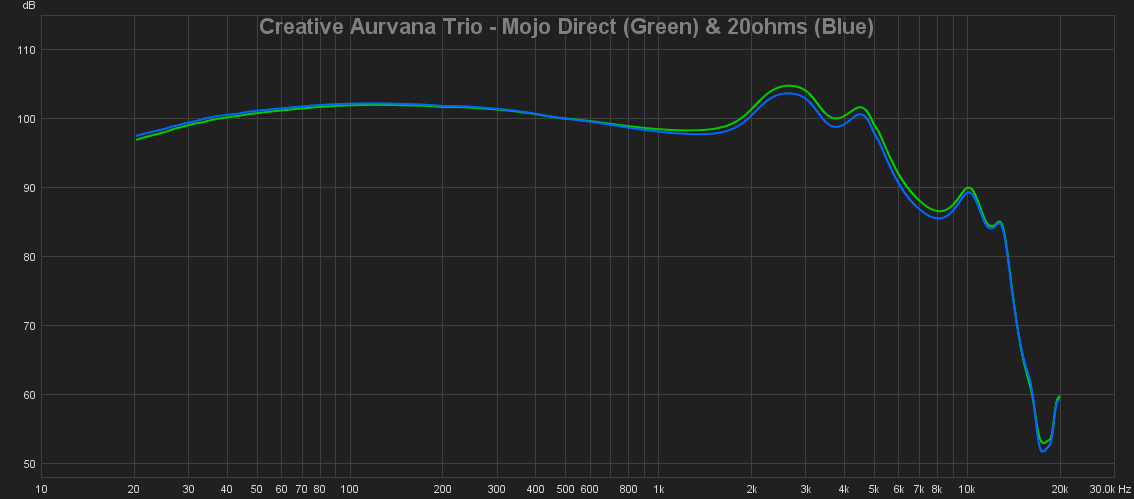

















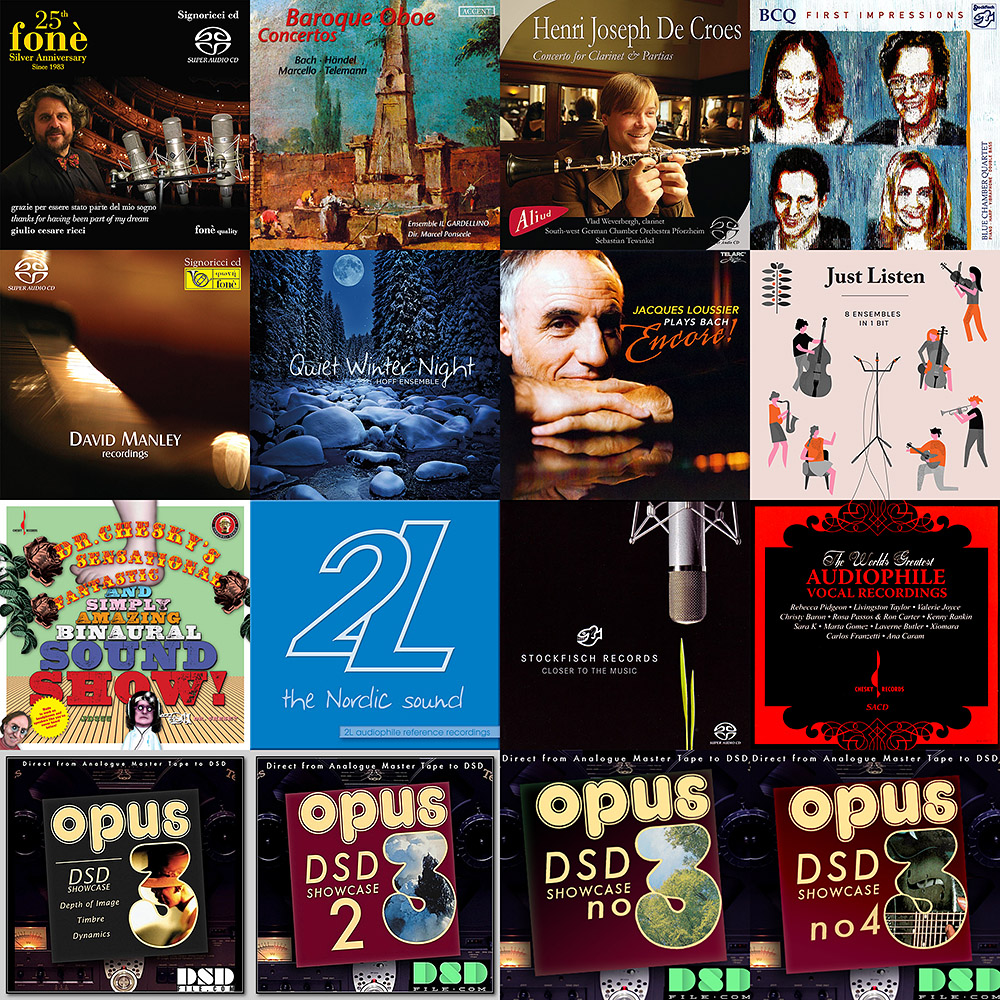
















































































































































































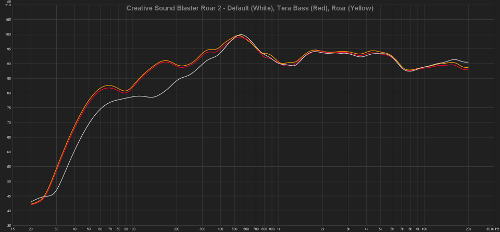
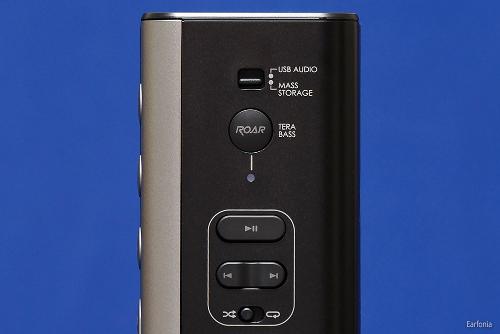
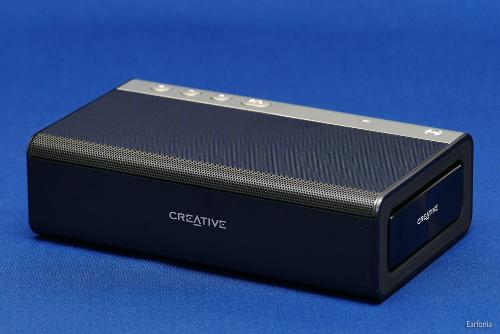



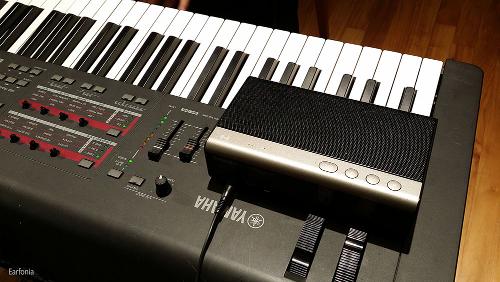




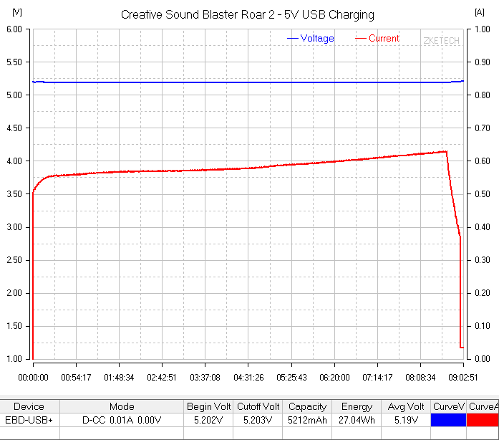



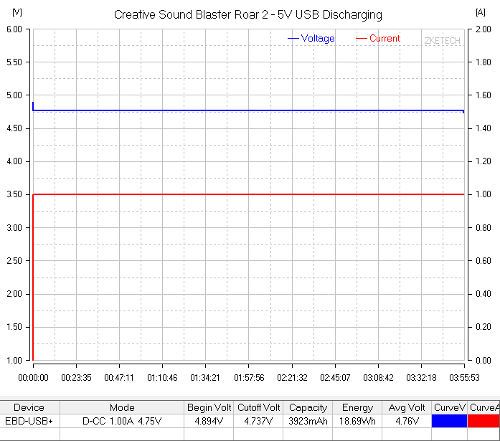









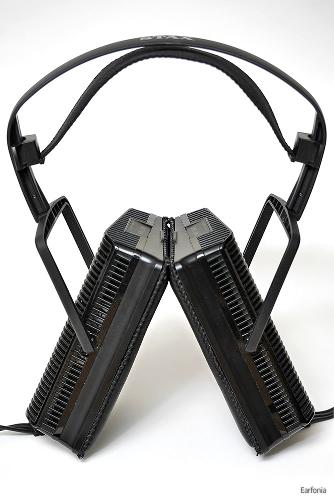










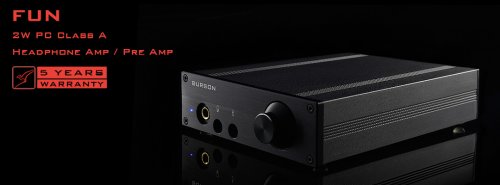






































































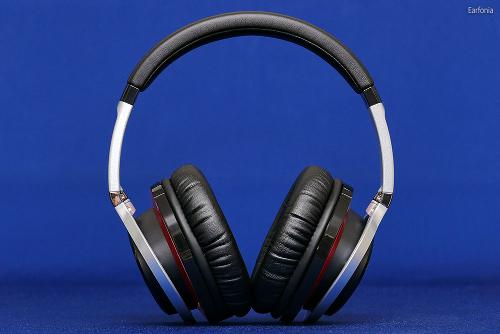




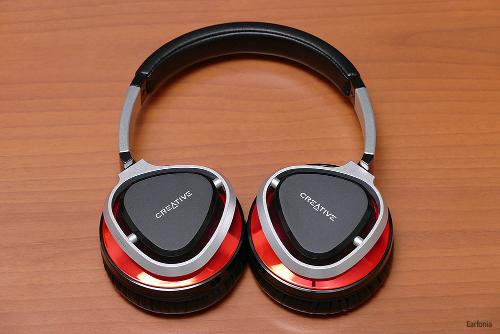
















































































I am curious about the cutoff you are talking about on PCM material. Is it on PCM only? Correct? Hmmm. Let me get my iDSD Micro out and have a listen. This is not something I recall experiencing with my PC. I think if I did have that issue I would remember because I would find it extremely annoying. That is still one of the maddening things about USB audio, and I am sure it drives these companies crazy... especially with PC audio, since hardware configs are practically unlimited in possible combinations, it is probably impossible to get it perfect for everyone.
I know over time these little glitches in the iFi software have improved immensely. To the point where I felt the user experience was a good as one could expect considering all the functionality. The software has come a long way, and I think that shows you both sides of the coin when your relatively small company has its own in house software and design team.